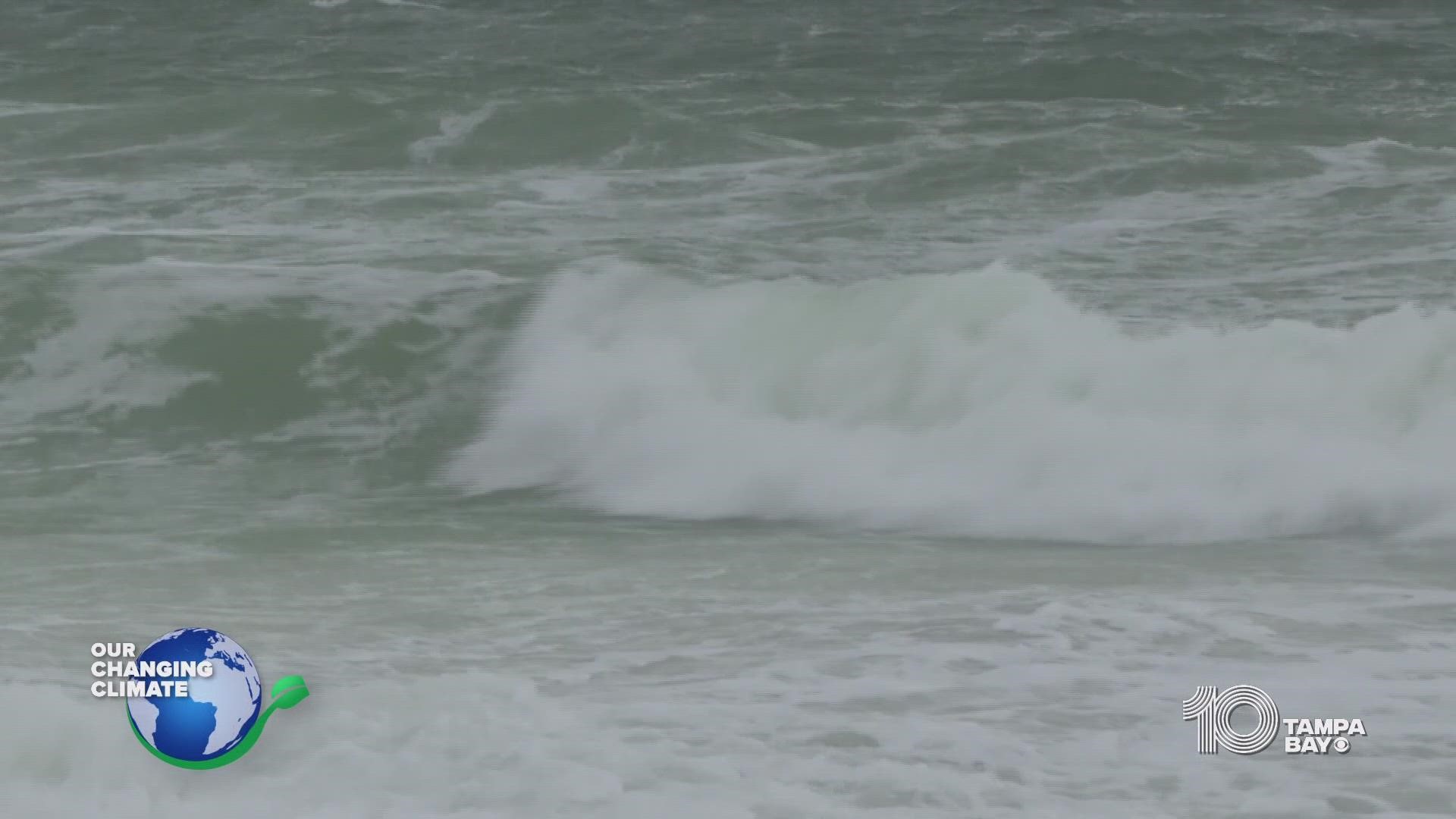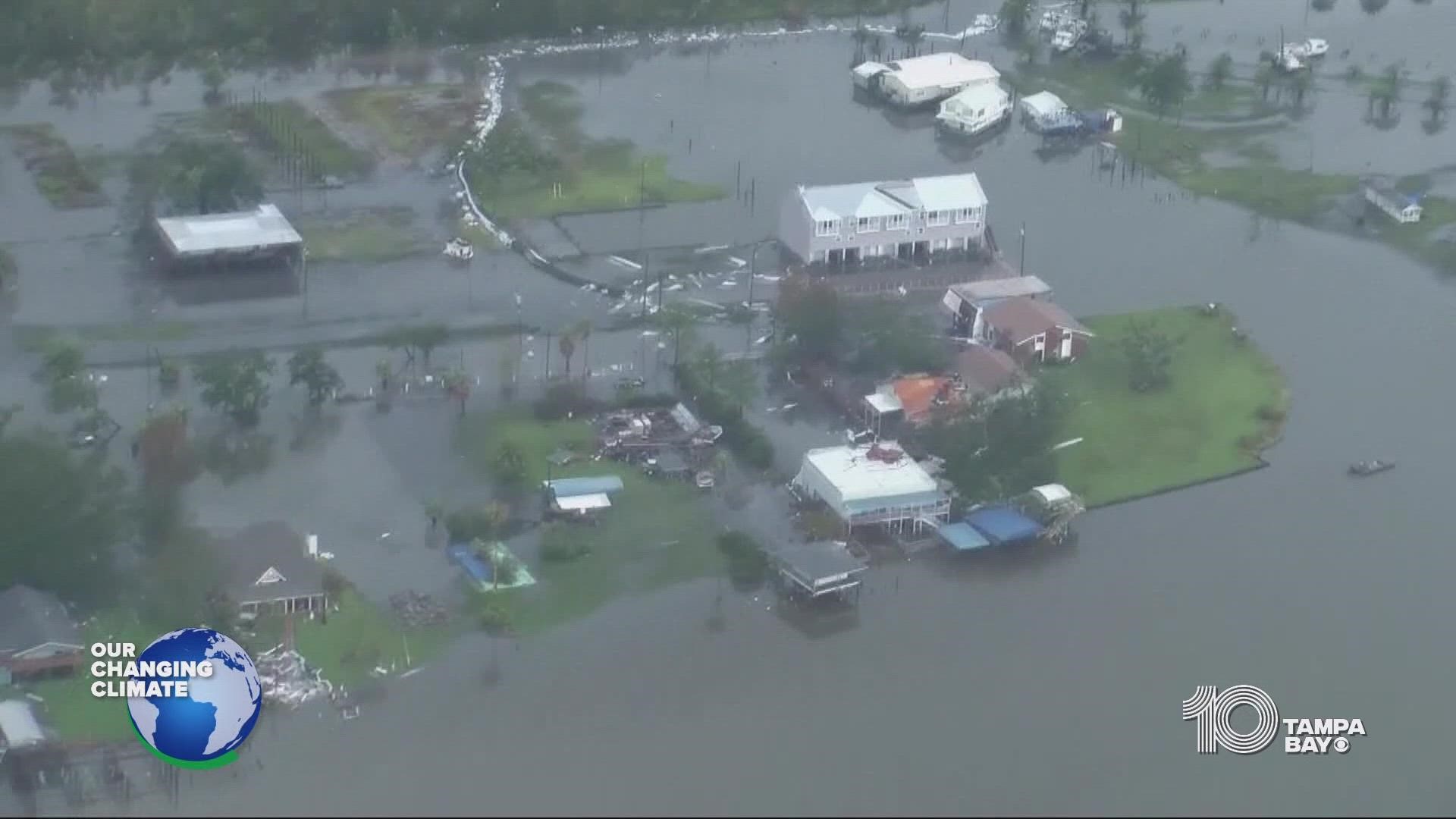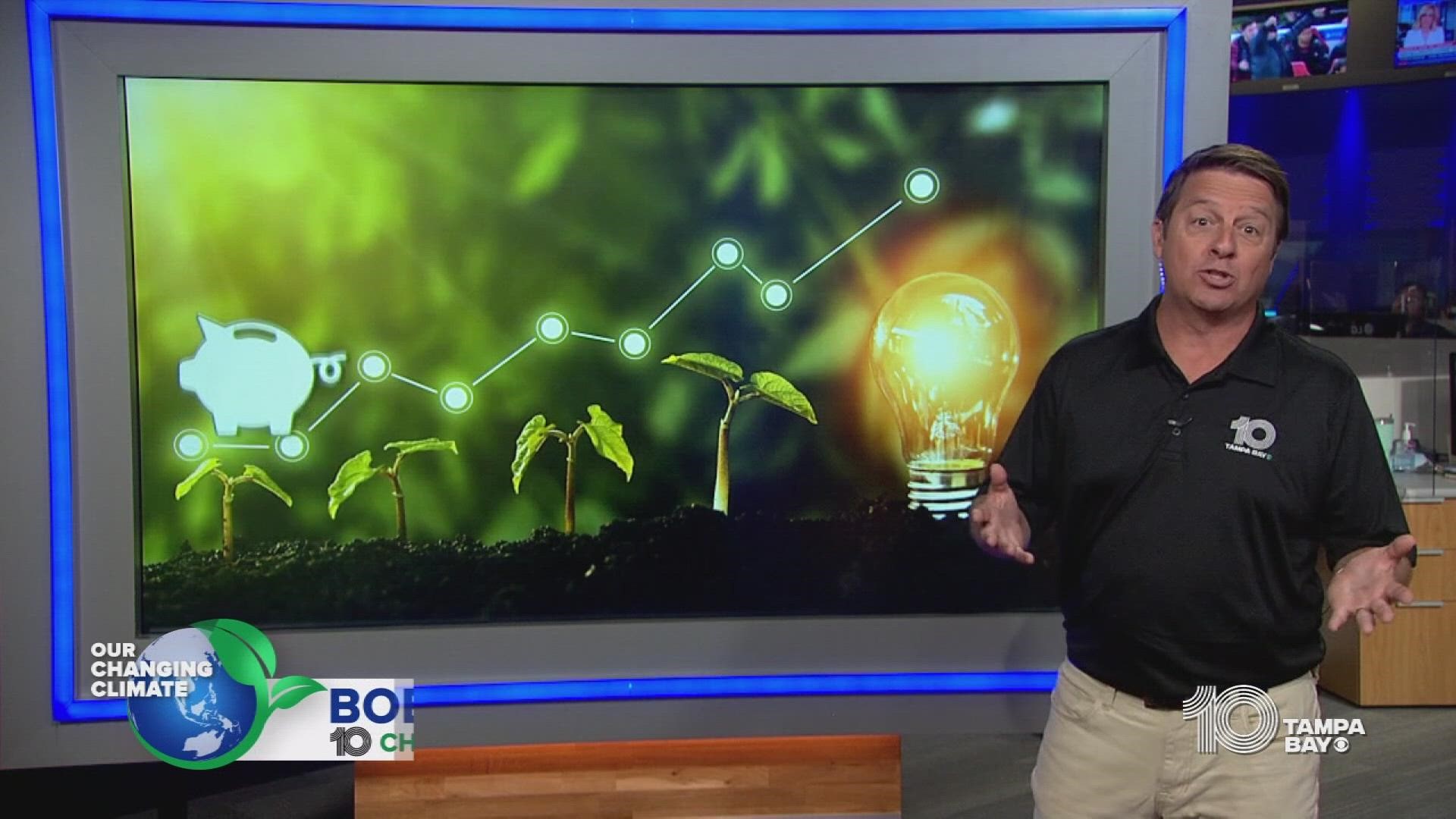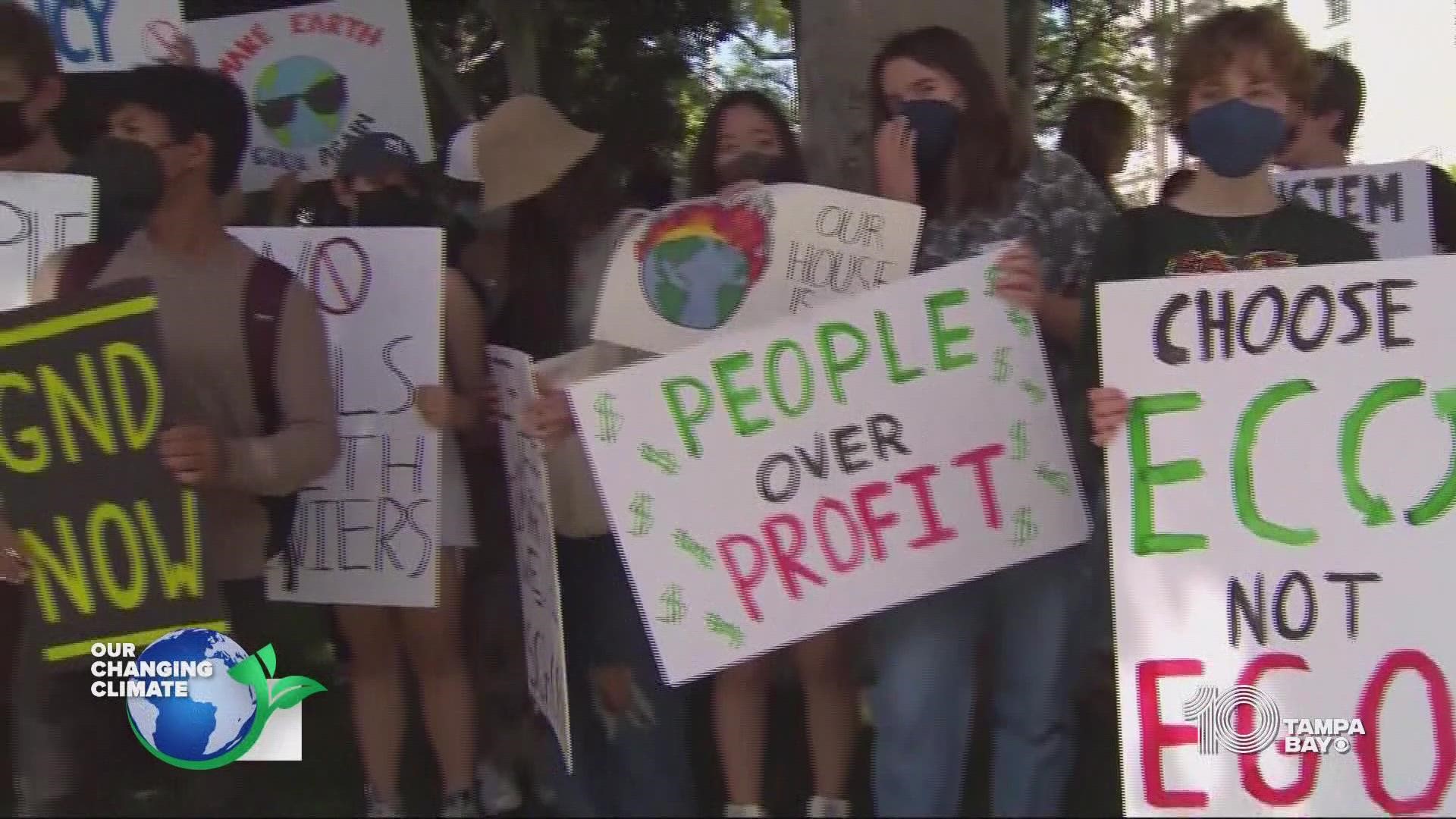From microplastics in your blood to sea level rise, a few things to know about our changing climate
For this Earth Day, we present a short guide to our changing climate both here in Florida and across the world, and what you can do to help.
Selcuk - stock.adobe.com
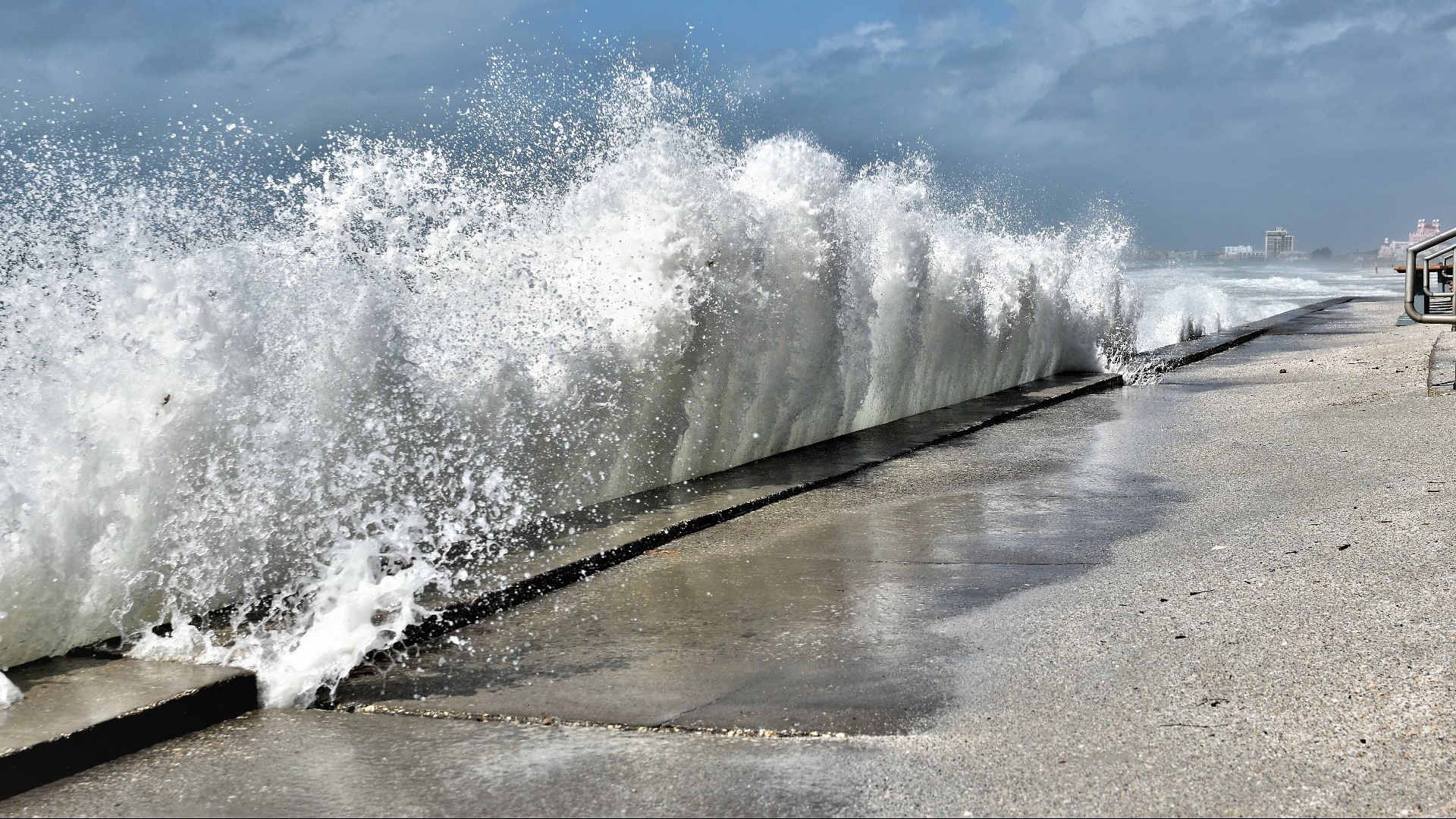
Earth Day is Friday.
For more than 50 years, people across the globe have spent the day demonstrating their support for protecting our shared environment. But, even after the festivities are done, our planet will continue its normal trajectory around the sun and the realities of climate change will continue to become more apparent.
Some of what that means, scientists predict, are rising sea levels, stronger and more frequent severe weather, and large wildfires becoming a yearly tradition. The consequences of all of this are not fully known, but what is, is that we can expect to see life on our planet change with the climate.
So, consider this a guide to some of the things you need to know about our changing climate both here in Florida and across the world, and what you can do to help.
Animal species facing extinction Rising temperatures and lower survival rates
You've likely already heard the facts about climate change. But, what you may not realize is that impact extends to the countless species of animals and marine ecosystems on our planet.
In a nutshell, rising temperatures are lowering the survival rates of various species due to changes that lead to less food, less reproduction, and interfering with their habitat. Combine that with human-caused impacts on the environment like littering, pollution, and drilling for oil, and you're talking about an ongoing crisis in various habitats across the globe.
A study from the Proceedings of the National Academy of Sciences found that one-third of wildlife on this planet could become extinct by 2070 due to climate change.
Some of the species currently considered most vulnerable, according to the World Wildlife Fund, include the African and Asian elephants, the monarch butterfly, polar bears, mountain gorillas and green sea turtles, which are found in subtropical and warmer waters across the planet.
Florida has one of the largest numbers of green sea turtle nests in the Western Atlantic, according to the Florida Fish and Wildlife Conservation Commission. But habitats for turtles and other marine life have been threatened in more ways than one.
“Fundamentally we are putting too many nutrients into Florida’s ocean and coasts," says Jon Paul "J.P." Brooker, the director of Florida Conservation for Ocean Conservancy.
"That’s too much nutrient pollution from agriculture from residential sources from commercial sources from municipal sources. Across the board, we are simply putting too much nitrogen and too much phosphorus.”
Excess nitrogen and phosphorus can cause an overgrowth of algae in a short period of time; we call them algal blooms. These blooms consume oxygen and block sunlight from underwater plants, making it impossible for certain species to survive. It’s that excess nutrient pollution that fuels harmful algal blooms around our coast.
Blue-green algal blooms can kill seagrass, leading to the starvation of manatees, and ultimately devastating impacts on wildlife.
Then there's red tide, which we know all too well along the gulf coast. And while red tide is a naturally occurring event, that warm nutrient-rich water is only further aggravated by our actions.
“It’s human impacts that are making red tide worse," Brooker tells us. "It’s human impacts that is making blue-green algal events worse, and warming water from climate change is making these harmful algal blooms worse. It’s like pouring gasoline on an already existing fire.”
And it’s not just algal blooms that are a concern. Our changing climate has a direct impact on the seafood we eat.
“The Gulf of Mexico is on average 3 degrees warmer than in previous years and that has all kinds of impacts on things like fisheries," Brooker continues."Fish travel throughout the gulf based on the temperature of the water. When the water is warmer, the fish migrate at different times. This part of the coast in west-central Florida is famous for its gag grouper. It’s famous for its mackerel fisheries. The mackerel aren’t coming at the right times of year, the red fish aren’t coming at the right times of year and that’s all because of a warming ocean.”
This is why now, more than ever, it is crucial we limit single-use plastics, explore smarter energy options, and combat waste and pollution.
Let's take a cigarette butt, for example. It’s fundamentally formed up of little tiny pieces of plastic. Once that plastic gets into the environment, it can break down and it can wreak havoc on the ecosystem. Not only harming sea life, but also birds if they feed those cigarette butts to their babies.
Florida birds are feeling the impacts of climate change in other ways too, mostly due to rising sea levels and temperatures that have become too hot for them to thrive in suitable habitats. The Audubon Society has identified at least 13 "high vulnerable" and 16 "moderately vulnerable" species in our state including the whooping crane, the red-headed woodpeckers and the fish crow.
Brooker says, "We need to make changes in our personal lives, we need to make changes in City Hall, we need to make changes in Tallahassee that improve water quality, that mitigate against a changing climate, and that remove marine debris from our coasts.”
Marine debris, which is any kind of human-created waste, can not only harm marine and coastal wildlife, but it can also damage habitats, interfere with navigational safety, cause economic loss to fishing industries, and overall threaten our own health and safety.
“We’re in an all hands on deck moment for Florida’s ocean and coasts, we’re at a crossroads, frankly. People need to care. It doesn’t matter from what end of the political spectrum you come from, it’s an all hands on deck moment," Brooker says.
10 Tampa Bay's Natalie Ferrari contributed to this report.
The problem with plastics The impacts on ecosystems and human health.
So what’s the problem with plastics?
They’re in almost everything we use, from those takeout containers you got with dinner to the bubble wrap on all those packages you’ve ordered even down to your face wash. You’re going to encounter it at some point in your day.
But mother nature is not a fan.
More than 300 million tons of plastic are produced every year. While most of that ends up in landfills, dumps, or simply just on the ground, at least 14 million tons end up in our oceans.
That’s according to the International Union for Conservation of Nature.
Plastic pollution not only threatens ecosystems but also human health.
“If you consume organisms that are already loaded with the microplastics, we might actually get them inside,” said Dr. Henry Alegria, a professor of chemistry at USF St. Pete. He says that it all comes down to microplastics.
According to his research, microplastics are tiny plastic particles less than 1/8-inch long. They are barely or not at all visible to the eye.
Research released in March 2022 showed scientists discovered microplastics in human blood for the first time. They came from things like plastic bottles and bags.
Think about it this way: a larger piece of plastic that ends up in the water will break down over time into microscopic pieces. A fish can consume it and that fish can end up on your dinner table.
“Microplastics are used in personal care products,” said Dr. Alegria. “When people wash their face or they discard the product, those are then directly taken into the ecosystem.”
Dr. Alegria was part of a research team that found four billion particles of microplastics just in Tampa Bay. He says one of the biggest offenders they found came from your laundry.
“A lot of fabrics have these very fibrous plastics,” said Dr. Alegria. "When you do your laundry, and that water gets discharged, it goes into water treatment plants. They remove most but not all.”
Another large source of those microplastics came from fishing gear like nets, lines, and ropes. So, what does that mean for our marine life?
“Unfortunately it is affecting all of our marine life, especially our sea turtles,” said Cassandra Starr with sea turtle rehabilitation at Clearwater Marine Aquarium. “A perfect example would be Stubby, a resident sea turtle. Stubby has been deemed non-releasable due to the fishing line entanglement. She lost both front flippers.”
Starr says she’s seen it all inside of a turtle, from fishing lines to balloons. When broken down, plastic bags could look like jellyfish in the water. Jellyfish are a large source of food for sea turtles. If turtles ingest plastic waste, gas could build up inside of them causing them to float, making them more susceptible to predators and boat strikes.
She recommends you recycle your fishing line. Many piers have tubes you can toss them out in.
Ending plastic pollution is a global effort. This year, 175 United Nations member states agreed to create a legally binding treaty to end plastic pollution. They will meet over the next two years to come up with an agreement on how to put limits on the life cycle of plastics.
The 2021 Plastic Waste Makers Index shows that 20 companies are behind more than half of the world’s single-use plastic waste. U.S.-based ExxonMobil topped the list.
Here are some simple things you can do every day to reduce your plastic use:
- Use reusable bags when you go grocery shopping.
- Pack your lunch. Bringing your own food to work could cut down on the amount of plastic used for takeout boxes and the plastic utensils that come with it.
- Use reusable water bottles and straws.
- Buy in bulk. The more you buy at once, the less packaging is needed.
- Use natural products. Avoid facial cleansers, body scrubs or other beauty products with microbeads.
10 Tampa Bay's Amanda Cordero contributed to this report.
Building a resilient Florida Legislation in the face of climate change.
Florida is spending more money than ever on environmental resilience projects.
The state has awarded more than $400 million through the Resilient Florida Grant Program to help communities fight the impact of flooding and storm surge. After this year’s legislative session, some more changes are on the way.
Most states are not prepared and don’t have any action plans for dealing with climate change, according to the Center for Climate and Energy Solutions. But Florida is getting on the path.
Florida lawmakers passed a bill to create a resiliency office under the governor. It’s charged with prioritizing resilience projects. The bill does a couple of other key things: The Department of Environmental Protection, or DEP, has to assess statewide flood vulnerability and sea-level rise data. The Department of Transportation is tasked with developing a resilience action plan for highways based on the conditions.
Projects show different parts of Florida could see a sea-level rise of 1-11 feet over the next 100 years.
When it comes to making sure Florida’s more than 1,300 golf courses are ready for you to tee off, lawmakers are making sure they’re certified for Best Management Practices with the help of the turfgrass science program at the University of Florida. DEP will certify courses.
Bobby Jones Golf Club in Sarasota has been part of a big $20 million renovation. Not only is it surrounded by water, but the course would also often flood. Now, it’s getting a redesign to prevent that from happening.
If crews take proper care of the greens at all of the state’s fairways, they can help keep runoff with nutrients out of our waterways and reduce the use of fertilizers, which emit greenhouse gases.
The golf course certification is good for four years, and to renew it, the team will need continuing education which includes more time to learn about the best practices for using fertilizer.
10 Tampa Bay's Libby Hendren contributed to this report.
Eco-friendly companies in Florida Five businesses making transactions greener.
Now, wanting to make the Earth a greener place is different than actually taking that first step to do so.
The good news is that you don’t have to trailblaze your way into creating a nonprofit or sustainable-based company. There are tons in our backyard here in the Tampa Bay area and across the state of Florida!
This is just a shortlist of local companies that can give you a few ideas on how to contribute to your community.
Keep Tampa Bay Beautiful
This local volunteer organization hosts some of the largest cleanup efforts after Tampa’s annual Gasparilla parade, collecting beads left in the streets. But, it’s not just cleanups. There are also community gardening events, a recycling program, and even storm drain designing opportunities for you to get involved in.
Keep Tampa Bay Beautiful has welcomed more than 19,000 volunteers on around 1,900 different projects. Doing the math, the organization has removed 358,567 pounds of litter and debris. That weighs the same as about 109 midsize sedans.
Sustany Foundation
The Sustany Foundation is a nonprofit organization that promotes sustainability efforts here in the Tampa Bay region. Whether that be through education, programs or grants. The nonprofit says it offers resources to people wanting to work on eco-friendly projects, community gatherings and research.
Even if it's something as simple as bouncing off ideas, Sustany says it strives to assist with missions similar to its own.
Tampa Maid Foods
This seafood business specializes in sourcing, processing and marketing its products with suppliers around the world, delivered right to local markets. But before it gets there, Tampa Maid Foods says it’s committed to making sure aquaculture, or the process of harvesting sea life, can continue without harming the native environment and its ecosystems.
Created in 1974, Tampa Maid Foods partners with Ocean Trust — an organization that conducts habitat restoration and marine conservation projects.
OnPeak Energy
Over in Miami-Dade County, this consulting company works with building owners and their associates to finance investments and install energy-saving equipment. This could be something like upgrading lighting systems, refurbishing infrastructure, or even coming up with sustainability reporting methods.
Its work isn’t limited to Florida. With nationwide projects in real estate, industrial, hospitality, and entertainment markets, OnPeak hopes to save money by being energy efficient.
Fleet Farming
This nonprofit agriculture service in Orlando can help transform your lawn into an edible garden or micro-farm. Starting with the materials in your backyard, Fleet Farming aims to show people how localized food systems are not only healthier for the consumer, but also for the planet.
That’s because of transportation emissions released as part of the supply chain and the number of chemical fertilizers and pesticides farms use, which inevitably hurt our environment. In turn, Fleet Farming hosts programs to teach people how to transform lawn spaces into sustainable farm plots.
10 Tampa Bay's Jasmin Sani contributed to this report.
Becoming a more eco-friendly consumer A few tips to consider during your next shopping spree.
Feeling inspired to help in the ways you can?
Well, the good news is that the impacts of climate change are not only in our control but also reversible, at least right now. What's even better is more and more people are considering sustainability when making purchases.
To live a more green lifestyle, here are some easy tweaks to consider.
Shop smarter
In general, food accounts for 10 to 30 percent of a household’s carbon footprint. Experts say one of the easiest things you can do is shop local and buy foods that are in season.
There are roughly 115 farms in West Central Florida selling directly to retail. Consumers can source more of their diets locally to reduce carbon emissions from transportation. It’s more sustainable when your produce only travels a few miles, not hundreds or thousands, to reach you.
Online shopping can also be a greener option over traditional retail as it can also help reduce auto emissions on the road.
Reuse and recycle
Using used and reusable products, including shopping bags and containers, is also a good way to reduce your footprint. You can also look to support companies that use recycled packaging and supplies and eco-friendly products like straws and bags.
Planning your shopping schedule strategically, and avoiding impulse buys, is also a good lifestyle habit to adopt to ensure your selection is intentional as a consumer and supports sustainable practices.
Use your buying power
With a little homework, you can find out if your favorite company is keeping the planet in mind with its business practices. Consumer buying power is real and your voice is important. A recent Hotwire study showed more than 80-percent of customers polled would drop a brand if it wasn’t in line with their values. Companies are noticing and are listening.

